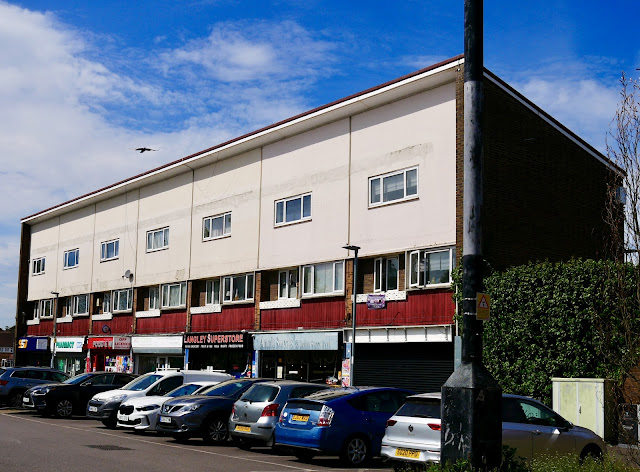Clifton (and the god of concrete spaces)
I spent a long time in churches growing up.
Raised as Roman Catholic, mass was a weekly experience. The Irish priests of our church had a particular tone of voice: low, slow and sombre. During sermons it seemed that they were deliberately gradually becoming quieter and slower - lulling us each into a state of meditative boredom before they’d eventually shout the creed at us for us all to stand up and join in with, after wiping the stupor from the corner of our mouths.
During those frozen moments, I always remember looking up at the ceiling of the church. The ceiling seemed a mile tall, with rows of arches like an overturned galleon. It was just timber and plaster, but I always imagined our prayers and thoughts getting caught up in the crooks of those arches like lost helium balloons. Those tall vaulted ceilings confirmed that God lived in the sky and that this church had managed to capture part of that sky to assure us God’s company.
We were taught about the omni-presence of God, but it was hard to imagine God being everywhere without that seeming a bit too voyeuristic. But when you lined humble benches inside a vast expansive room, we become humbled by space, by the volume of nothingness, and it was easier to imagine God there: a joyless, ascetic God we communicated with the monotonous vibrations of music, the cold scent of incense and with the privacy of our forced reflection.
Churches, concert halls and stadiums all share this power to create a utilitarian response from groups of libertarians. These buildings achieve this response better through scale and strength to create swarms out of people: to bring out the inner bee. These chasms of space transform sound from air to great swirls of water. The walls show us the scale of construction that is only achieved through hundreds of hands and years of work and the determination from a single vision.
I think Brutalism succeeds in concert halls and churches, but usually fails in carparks and housing estates. The German churches of Godfried Bohm are beautiful buildings. They resemble the sculptural artistry of buildings like the Sydney Opera house with their curves and infinite angles but they do so without a sense of delicacy. The simplicity of the concrete regresses us to ancient religious structures made of mud, rock and clay. They exist in contrast to the ornateness of brick and timber churches made to emanate an ornateness that almost seems beyond human capability. Brutalist churches are stadiums for God. Humble, strong, overt in their surroundings - they are physically intimidating and firmly capturing these parts of sky to communicate with a heavenly God.
Clifton Cathedral doesn’t appear as much from the outside - a municipal building more than anything. It could be a health centre or a community centre built in the mid sixties to mid seventies. The pyramid structure on its roof completely belies the impact of the space within that structure in the inside. I had visited on a weekday morning in February. It was wet and windy and the church was empty but for a church widow who was arranging the music on the organ for a later service. I smiled at her, but she stared back at me with suspicion. I sensed that she was the gargoyle of this place and that I needed to earn her trust.
Clifton Cathedral is unique for its wide doming ceiling being unsupported by internal pillars, creating an open communal space. The interior walls are decorated with religious motifs crudely carved in stone that resemble soviet murals. There is no delicacy to the touch of the sculpture, but a raw rough finish as if carved by blunt instruments and brute force. Key to this was his how the hands were sculpted themselves: strong calloused worker hands. One of these motifs was of the stake that plunged through Jesus’ hand. Unlike traditional churches where Jesus almost appeared to be demurely bored, these stone carvings brought the violence to life with the force of how they had been made.
The ceiling sweeps into a chimney-like pyramid tower with wooden struts wound within like they are being pulled upwards. At the top is glass allowing a spotlight onto the altar. This space is like a portal of air and light: the robust concrete structure being sucked into the sky - humans sitting insignificantly below. With the whistling sound of the wind chambering the space, the materials and design of this space achieve what so many other religious buildings fail to do I think: a place of communion for whatever a person’s interpretation of God is.
Here I sat surrounded by rock, concrete and the space within that these stark materials accentuate. The subtle engineering of the structure, again creating space without seeking applause. I sat listening to the wind and the rain and staring up at sky thinking that the helium balloons would make it out of this place.










Comments
Post a Comment